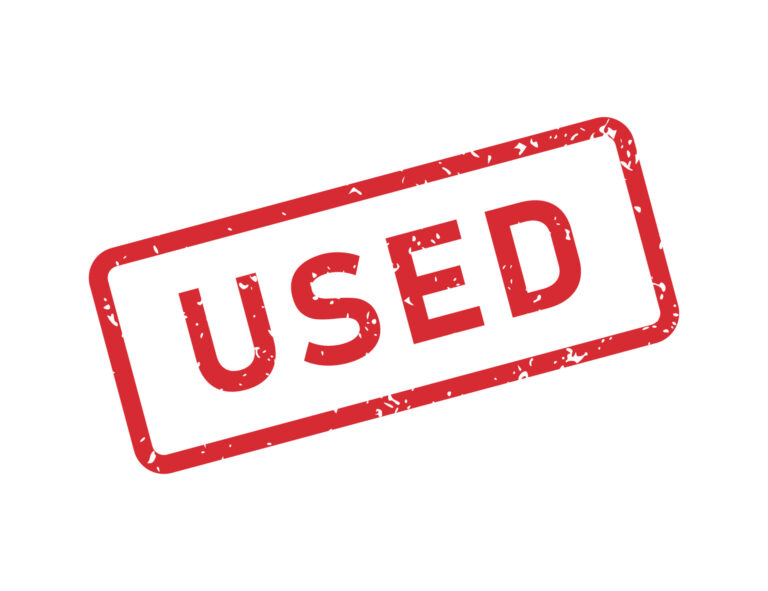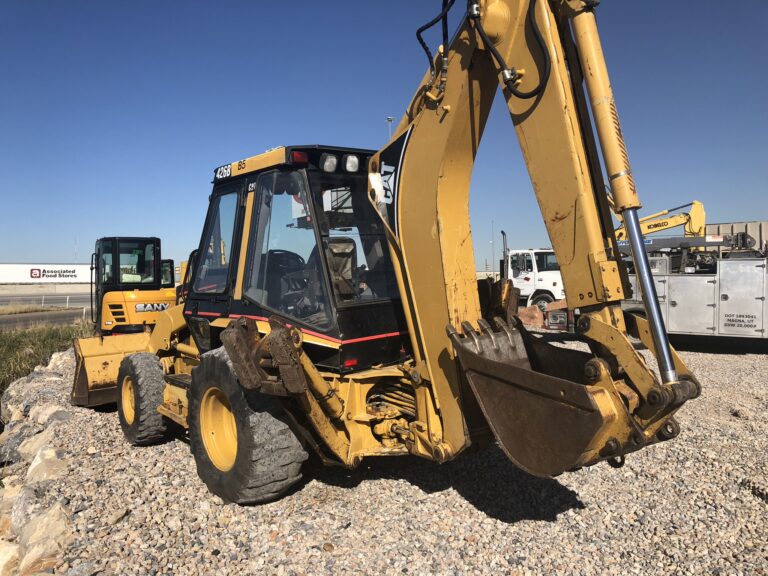Blue Book Value On Commercial Trucks: Your Comprehensive Guide
Blue Book Value On Commercial Trucks: Your Comprehensive Guide cars.truckstrend.com
In the vast, dynamic world of commercial transportation, understanding the true worth of an asset is paramount. Whether you’re a seasoned fleet manager, an independent owner-operator, an insurance professional, or a potential buyer or seller, the concept of "Blue Book Value" for commercial trucks is a cornerstone of informed decision-making. Unlike passenger vehicles, valuing commercial trucks involves a more complex interplay of factors, given their specialized nature, diverse configurations, and rigorous operational demands.
This comprehensive guide will demystify the Blue Book Value of commercial trucks, exploring what it means, why it matters, how it’s determined, and the practical implications for anyone involved in the commercial vehicle market.
Blue Book Value On Commercial Trucks: Your Comprehensive Guide
What is "Blue Book Value" for Commercial Trucks?
When people refer to "Blue Book Value" for commercial trucks, they’re generally not talking about Kelley Blue Book (KBB), which primarily focuses on passenger vehicles. Instead, the term serves as a widely understood shorthand for established, industry-standard valuation guides and methodologies used to determine the fair market value of commercial trucks.
The most prominent and respected source for this information is often the Official Commercial Truck Blue Book, published by EquipmentWatch (formerly known as Price Digests). This guide, along with other reputable sources like TruckPaper’s pricing data, Commercial Truck Trader’s market insights, and specialized appraisal services, provides benchmarks for the value of various types of commercial vehicles, from heavy-duty semi-trucks to medium-duty box trucks and specialized vocational vehicles.
This "Blue Book Value" represents an estimate of a truck’s market worth, taking into account a multitude of factors. It serves as a crucial reference point for:
- Buying and Selling: Ensuring fair pricing for both parties.
- Financing: Lenders use it to assess collateral value for loans.
- Insurance: Determining coverage amounts and payout in case of loss.
- Depreciation Calculation: For accounting and tax purposes.
- Fleet Management: Strategic planning for acquisitions and disposals.

Key Factors Influencing Commercial Truck Value
Valuing a commercial truck is far more nuanced than assessing a passenger car. The following factors play a significant role in determining its "Blue Book Value":

- Year, Make, and Model: The truck’s age, manufacturer reputation, and specific model line are foundational. Newer trucks generally hold more value, and certain manufacturers (e.g., Peterbilt, Kenworth, Freightliner, Volvo) are known for durability and resale value.
- Mileage: This is perhaps the most critical factor. Commercial trucks are built to run hundreds of thousands, if not millions, of miles. Lower mileage relative to the truck’s age almost always translates to higher value.
- Condition (Physical & Mechanical):
- Exterior/Interior: Dents, rust, paint condition, interior wear and tear.
- Mechanical: Engine health, transmission performance, axle integrity, brake system, tire condition, and overall operational soundness. Any major repairs needed significantly reduce value.

- Engine and Drivetrain Specifications: The type, horsepower, and torque of the engine (e.g., Cummins, Detroit Diesel, PACCAR, Volvo), transmission type (manual vs. automatic), and axle configurations directly impact performance, fuel efficiency, and suitability for specific jobs, thus influencing value.
- Specialized Equipment and Upgrades: For vocational trucks (dump trucks, concrete mixers, refuse trucks, etc.), the type, condition, and functionality of the specialized body or equipment (e.g., liftgate, crane, reefer unit, sleeper cab amenities) are crucial value drivers.
- Maintenance History and Records: A comprehensive, verifiable maintenance history indicates a well-cared-for vehicle and significantly boosts confidence and value. This includes records of oil changes, major service intervals, and repairs.
- Market Demand and Economic Conditions: Supply and demand dynamics within the commercial trucking industry, fuel prices, freight rates, and broader economic health can cause values to fluctuate.
- Location: Regional differences in demand, specific industry needs, and even local regulations can affect a truck’s market value.
- Emissions Standards/Compliance: Trucks that meet current emissions standards (e.g., EPA 2010, GHG14) or have updated emissions control systems (DPF, SCR) often command higher prices, especially in regions with strict regulations.
How to Determine Blue Book Value for Your Commercial Truck
Determining an accurate "Blue Book Value" requires a systematic approach and access to reliable data:
-
Gather Comprehensive Truck Information:
- VIN (Vehicle Identification Number): Essential for accurate identification.
- Year, Make, Model, Series: Be specific (e.g., 2018 Freightliner Cascadia 125).
- Engine: Make, model, horsepower, and torque.
- Transmission: Make, model, number of speeds (e.g., Eaton Fuller 10-speed manual, Allison automatic).
- Axles: Front axle weight rating, rear axle weight rating, tandem/single, gear ratio.
- Mileage: Current odometer reading.
- Condition: Detailed assessment of interior, exterior, tires, and mechanical components. Note any damage, wear, or recent repairs.
- Key Features/Options: Sleeper size, auxiliary power unit (APU), specific body type, PTO, specialized attachments, premium interior features.
- Maintenance Records: Have them organized and ready.
-
Utilize Industry Valuation Tools:
- EquipmentWatch (Official Commercial Truck Blue Book): This is the most authoritative source. It typically requires a subscription but offers detailed valuation data based on extensive market analysis.
- Online Marketplaces: Websites like TruckPaper.com, CommercialTruckTrader.com, and RitchieSpecs (for construction equipment) allow you to search for comparable trucks and see their asking prices. This provides a real-time pulse of the market.
- Auction Results: Reviewing past auction results (e.g., Ritchie Bros. Auctioneers, IronPlanet) can provide insights into wholesale values.
- Dealerships and Brokers: Reputable commercial truck dealerships and brokers have extensive market knowledge and can often provide informal appraisals.
- Professional Appraisers: For complex or high-value trucks, or in legal situations, a certified commercial truck appraiser can provide a highly accurate, independent valuation.
-
Compare and Adjust: Once you have a base value from a guide or comparable sales, adjust it based on your truck’s specific condition, features, and mileage relative to the average. A truck in excellent condition with low mileage will command a premium over the base value, while a truck needing significant repairs will be discounted.
The Difference Between Retail, Wholesale, and Trade-In Value
It’s crucial to understand that a truck can have several different "Blue Book Values" depending on the transaction type:
- Retail Value: This is the highest value, representing what a dealership or private seller might ask for a truck sold directly to an end-user, often including reconditioning costs, warranty (if applicable), and profit margin.
- Wholesale Value: This is the price a dealer might pay to acquire a truck from an auction or another dealer. It’s typically lower than retail as it accounts for the dealer’s reconditioning costs and profit margin when reselling.
- Trade-In Value: This is what a dealership offers a customer when trading in an old truck towards the purchase of a new one. It’s often the lowest value, as it accounts for the dealer’s convenience, immediate inventory acquisition, and the costs associated with preparing the trade-in for resale.
Why Accurate Valuation Matters
Accurate valuation of commercial trucks is not just an academic exercise; it has direct financial and operational consequences:
- For Sellers: Ensures you don’t undersell your asset, maximizing your return on investment.
- For Buyers: Prevents overpaying and helps negotiate a fair price, ensuring a sound investment.
- For Lenders: Provides a basis for loan amounts and risk assessment. A reliable valuation protects their investment.
- For Insurers: Essential for setting appropriate premiums and determining fair payouts in the event of theft, damage, or total loss.
- For Fleet Managers: Aids in budgeting, capital expenditure planning, and optimizing the timing for vehicle replacement.
- For Tax Purposes: Accurate depreciation schedules and asset valuation for balance sheets.
Challenges in Valuing Commercial Trucks
Despite the availability of resources, commercial truck valuation presents unique challenges:
- Customization: Many commercial trucks are highly customized for specific vocational uses, making direct comparisons difficult.
- Niche Markets: Some specialized trucks operate in very small, niche markets, where data on comparable sales is scarce.
- Limited Data for Older/Specialized Trucks: Valuation guides often have less robust data for very old trucks or highly unique configurations.
- Rapid Component Depreciation: While the chassis and engine might be durable, specialized components (e.g., refrigeration units, cranes, lift axles) can depreciate at different rates or require expensive maintenance, impacting overall value.
- Regional Variations: Market demand can vary significantly by geographic region, impacting prices.
Tips for Maximizing Your Commercial Truck’s Value
If you’re planning to sell or trade in a commercial truck, consider these tips to enhance its "Blue Book Value":
- Meticulous Maintenance: Keep detailed records of all maintenance and repairs. A well-documented history of care is invaluable.
- Regular Cleaning and Detailing: A clean truck, inside and out, creates a strong first impression.
- Address Minor Repairs: Fix small issues (e.g., dashboard lights, torn seats, minor body damage) before showing the truck. These small fixes can prevent significant price deductions.
- Tire Condition: Good tires are a major selling point. Ensure they have adequate tread and are properly inflated.
- Emissions Compliance: Ensure all emissions systems are in good working order and up to date with relevant regulations.
- Smart Upgrades: While major customizations might not always add dollar-for-dollar value, practical upgrades like an APU, comfortable seating, or modern infotainment can enhance appeal.
- Timing the Sale: Monitor market trends. Selling when demand is high or before a new model year significantly reduces the value of older models can be advantageous.
Sample Valuation Factors Table
While a precise "price table" for all commercial trucks is impossible due to the dynamic nature of the market and the sheer number of variables, this illustrative table shows how various factors generally influence a truck’s market value:
| Factor | General Impact on Value (Relative) | Explanation |
|---|---|---|
| Age | Older = Lower Value | Standard depreciation over time. |
| Mileage | Higher = Lower Value | Indicates wear and tear; lower mileage suggests more remaining life. |
| Mechanical Condition | Excellent = Higher Value / Poor = Significantly Lower Value | Directly impacts reliability and immediate repair costs. |
| Physical Condition | Excellent = Higher Value / Poor = Lower Value | Affects curb appeal and perceived care. |
| Maintenance Records | Complete & Verifiable = Higher Value / Absent = Lower Value | Builds trust and confirms proper care. |
| Engine Make/Model | Desirable/Reliable = Higher Value / Less Common = Lower Value | Certain engines are more sought after for performance or fuel economy. |
| Transmission Type | Automatic (for some applications) = Higher / Manual = Varies | Automatics are gaining popularity for ease of use, but manuals are robust. |
| Tire Tread Depth | New/Good = Higher Value / Worn = Lower Value | Direct cost saving for the buyer; safety factor. |
| Specialized Equipment | Good Condition/Relevant = Higher / Damaged/Outdated = Lower | Functionality and modernity of vocational attachments. |
| Market Demand | High = Higher Value / Low = Lower Value | Economic cycles and specific industry needs influence prices. |
Frequently Asked Questions (FAQ)
Q1: Is "Blue Book" the only source for commercial truck values?
A1: No. While the Official Commercial Truck Blue Book (EquipmentWatch) is a leading guide, it’s complemented by real-time market data from online marketplaces (TruckPaper, Commercial Truck Trader), auction results, and professional appraisals. It’s best to consult multiple sources.
Q2: How often do commercial truck values change?
A2: Values can fluctuate based on supply and demand, economic conditions, fuel prices, and new model releases. While major guide updates might be quarterly or annually, real-time market prices can shift more frequently.
Q3: Can I get an official appraisal for my commercial truck?
A3: Yes, professional commercial truck appraisers can provide certified valuations. This is often recommended for high-value assets, insurance claims, legal disputes, or complex fleet transactions.
Q4: Does customization always add value to a commercial truck?
A4: Not necessarily dollar-for-dollar. While some practical upgrades (e.g., APU, comfortable sleeper amenities) can enhance appeal, highly specialized or aesthetic customizations may only appeal to a niche market and might not recoup their cost in resale value.
Q5: What impact does a salvage title have on a commercial truck’s value?
A5: A salvage title significantly depreciates a commercial truck’s value, often by 50% or more, even if repaired. It indicates a severe past incident (e.g., major accident, flood, theft) and makes the truck much harder to insure and finance.
Conclusion
Understanding the "Blue Book Value" of commercial trucks is an indispensable skill in the trucking industry. It’s not a single, fixed number but a dynamic assessment influenced by a complex web of factors, from the truck’s specifications and condition to prevailing market conditions. By thoroughly researching, utilizing reliable valuation tools, and meticulously maintaining your assets, you can ensure fair transactions, optimize your investments, and navigate the commercial truck market with confidence. Armed with accurate valuation knowledge, you’re better positioned to make strategic decisions that drive profitability and efficiency for your operation.






